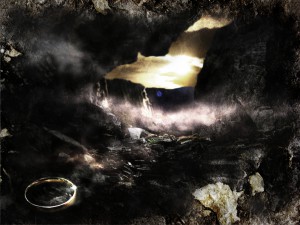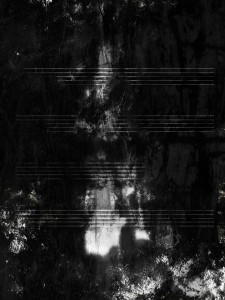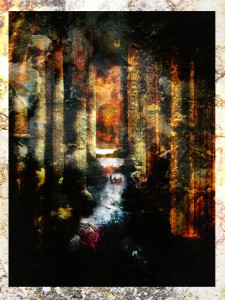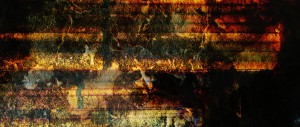The History of the Ring
In musical terms The One Ring is the most active element in Shore’s score and presented in many states, whether it be purely passive or recombining with a host of other thematic material in its striving to return back to Mordor.
The theme may begin in isolation from all elements around it but in the progression of Shore’s score and its story arc in interacts quite actively with the musical landscape of middle-earth. The third age of Middle-earth is very much deeply affected by the plight of The One Ring and so this musical element weaves through a great many aspects of middle-earth’s musical identity. In the ring’s dormant, slumberous state it is alive with the aforementioned breath-like movement and it is notable too that the melody cleverly draws a circular ring shape in music.
The theme hooks the attention of the listener with a set of multiple characteristics; it is seductive and sorrowful and alludes to a grand passing of time. For all its pleasantness as a musical element it easily transforms into a sentient force intent on plotting its next movements. The theme also has a dangerous edge revealed in its harmony where tell-tale signs uncover its underlying roots to the evil of Mordor.
The power of the ring and the evil of Mordor are exactly the same thing in story terms but also literally presented as such in music. One of the additional themes for the ring and built from the same foundation of the history theme (4-5 pitches to be exact) is referred to as The evil of the ring and represents the musical identity of Sauron and Mordor.
There is ultimately no separating The One Ring from Mordor and a very close relationship musically is highly inevitable; for all the beauty and seductiveness the music of the ring offers the sense of evil and dread bound up with it is ever present — like a sting in the tail.

The History of the Ring (2012) by John Cockshaw.
Wraith notes
As enlightened by the analysis presented by Adams’ commentary the initial nine notes of The history of the ring theme become, when played simultaneously, the pitches that comprise the Ringwraiths theme a ceremonial chant for chorus and orchestra and the musical representation of the nine black riders.
In Wraith notes, the dark spectral figure of one of the nine wraiths stands in combination with ghostly stave elements. It is a response to the music expressing death and dread with a single-minded purpose, and as the wraiths are servants of Sauron the music reflects this lifeless slavishness; this is literally music without life and as Adams point out ‘the melody line is almost mono-rhythmic and without contour, and creates its sense of deadly anticipation through ever-expanding voicings’.

Wraith notes (2014) by John Cockshaw.
Dark places of the world

Despite the theme title being directly referenced in this piece the content of the scene is set much earlier when the fellowship venture through the great halls and cavernous chambers of the dwarf city of Dwarrowdelf. The impending encounter with the Balrog is foreshadowed ominously by the fire-like glow reflected upon the pillars of the scene and the hint of fire to the back of the composition. The beast is out of sight for now but its presence and the threat it represents is perilously near.
The scene of the artwork also references the musical theme for Dwarrowdelf itself. The halls of this city bestow an ancient grandeur and typify the industry and aspirational craft of the dwarves. Howard Shore’s section of the film score for this specific location expresses this in expert strokes, the music of Dwarrowdelf reaches high to mirror the ambition of the dwarves but falls short of its reach only to fall solemnly into despair.
Any sense of majesty still evoked is twinned firmly with tragedy and the whole scene is now ominously empty and quiet – all but for the company of the fellowship who are truly dwarfed by the scale of the pillars and the enveloping empty space. At this point in the story events will take a dire turn before they get better. Appropriate to the ascending and descending characteristic of the music for Dwarrowdelf a subtle musical reference has been coded into the artwork by way of the huge pillars; rotate and view the artwork in landscape orientation will reveal the suggestion of musical staves.
When the piece is viewed in portrait orientation as intended these elements stand vertically to express the music’s ascending lift and simultaneous dismal fall into gloom and ruin.

DETAIL: Dark places of the world (2012) by John Cockshaw.


